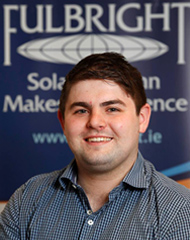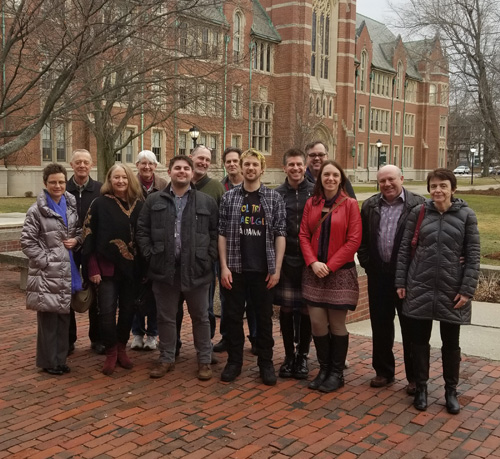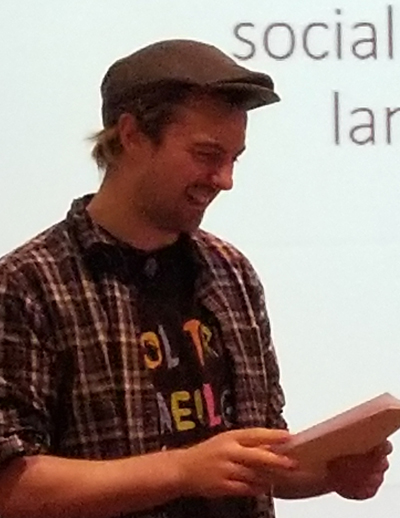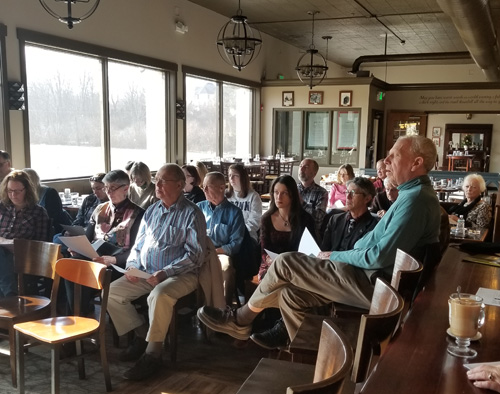Continuing Community – ‘The Next Bead’

Picture this; a family at the foot of the crossroads embracing each other for one last time, knowing this might be the last time to physically see their child. Unfortunately, here we see a familiar image of Ireland, an image the mind’s eye relates to clutched rosary beads and the infamous white boat. For many generations, leaving Ireland has been a common theme; the Starved Generation, the Fenian movement, the rebellion eras and more recently the Great Recession. In many ways the Irish old saying ‘Cloch eile ar an bpaidirín’ – another bead on the rosary beads captures the normality of exodus each generation has faced, a country unable to provide for its people.
Of course, the sentiment often feels like a numbed paradigm. The standard narration in response is the backward glance, looking back fondly but left without choice only to move on. Recalling images of rugged landscape, song and warmth of home. For many in the greater Springfield area a small piece of the heart never accepted passage on the boat, the western seaboard clung to the heartstrings. This was a necessary rational for the people of Cork, Mayo, Kerry amongst others where the land would only support one child – home provided suffrage no longer. Coming to the New World brought its own set of challenges, many leaving hunger in Ireland only to come to Hungry Hill and negotiate a new life, which, at times must have felt like the same circumstances in a different location. In many ways the migrants brought home to home.

My regard for the Irish-American has increased so much since I arrived here almost six months ago. It’s a source of pride to see fellow Irish who left with only the clothes on their back, a crumpled ticket in a clenched fist to achieve what they have. Today’s institutions emerged from the same people, decedents of whom can be seen in the attributing pictures. Our Lady of the Elms provided opportunity for young females to pursue education at a time where neither Catholics nor females held much social capital. In pioneering female education in Western Massachusetts, Irish Catholics laid example to the Catholic community. A better life was no longer unachievable. Many of the second generation earning university degrees, a success simply unimaginable in Ireland given what they left. Later, the community breathed new life, twenty years ago this year with the birthing of the Irish Cultural Center of Western New England (ICC) from Elms College. In review, these developments are a measuring stick of the strides made over the past century, knitting the social fabric of the community together as well as providing a communal focal point. Accounts from members, central to the projects in the pending years attest to as much. Time in bearing witness to these changes has seen progress go from strength to strength with the Irish both sides of the Atlantic – Ireland and Western Massachusetts. The visitors over the years attest to this; Mary McAleese and Nuala Ní Dhomhnaill are two speakers of note representative of these ties. A former president and also a poet renowned the world over but to name two. This is a testament to the vibrancy and demand on both sides of the Atlantic to deepen our roots. Not bad for what by United States standards is a small community west of Boston.
Naturally now, the challenge becomes how to nourish this connection, with the next bead on the chain as it were. Today’s society is wrapped in a set of social circumstances different to that of faced by our predecessors. We live in a time ever more individualistic and egocentric. Generations now must grapple with retaining identity while at the same time engaging with a social flux not yet developed. This intersection brings many of our previous values into light, needing re-evaluation. The question remains then, how can we continue to serve our community and remain faithful to the spirit upon which the project was founded.

This I argue makes the relationship between Elms College and the Irish Cultural Center (ICC) more important than ever. It represents a constant in a changing environment, a grounding in reality in a life of superficiality. The lecture series coordinated between Elms College and the Irish Cultural Center provided by Ben Ó Ceallaigh was embolic of this relationship. His discussion showed an Ireland not typically discussed, overlooking romance and the benign narrative to induce critical discussion. His lectures drew localised issues and contextualised them on the international setting, treading issues in Ireland to global systematic structures – a microcosm of the whole. Ó Ceallaigh in drawing evidence from his research combed these overarching issues through the eyeglass of capitalism, neo-liberalism and identity. These concepts he argues are intrinsically linked to our everyday life settings.
The first lecture 1, Macroeconomic Forces and Majority and Minority Language Use in particular achieved this, linking overarching aspects of socio-economic change and their impact on the average person. Lecture 2 developed this idea further, championing the need for a social response in the form of education and community; Grassroots Language Activism and Radical Politics: Current and Historical Examples from the Gaelic Contexts.
Lecture 3, Minority Languages and Modernity: Technological and Social Challenges for Minority Language Reproduction focused on the minority language learner, highlighting the challenges and also recommending resources. Workshop Gàidhlig for Gaeilgeoiri (Scots-Gaelic and Irish) examined linguistically the two sister languages, exploring phonological and morphological divergence and how they have become realised in the modern language usage.

The success of the events was not merely a success for Springfield but a success for Irishness and identity. The strong turnout of over one hundred people over the duration of the series indicates the massive financial investment made by the ICC was indeed the correct decision. The experience was made more special in linking up communities within the surrounding areas with people from Amherst, Boston, Brattleboro and Worcester also in attendance.
In bridging the gap between the new and the old, the series succeeded speaking on behalf of both Irish communities. Through recounting shared past experiences the audience without doubt felt a sense of importance in understanding Ireland has shaped the Irish-American but so too has the Irish-American shaped Ireland. It should be remembered that emerging from a common social fabric this heritage is ours to share. The language focus of the series is significant as there is no more profound signifier of identity. Ó Ceallaigh’s presentations remind and help us get closer to that understanding.
A word of thank you to Elms College and the Irish Cultural Center. A special thank you to the following for supporting the series: Dr. Joyce Hampton, William Dziura and David Kimbell from Elms College. Also, to Sean Cahillane, Katie Doe, Gerald Costello and all the staff of the ICC without whom this would not have been possible.
‘faoi scáth a chéile a mhaireann daoine’– people live under the shadow of one another
